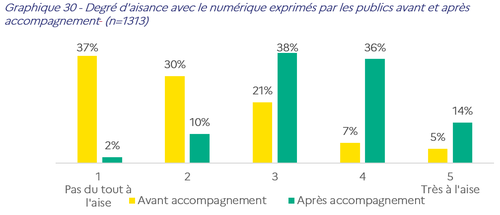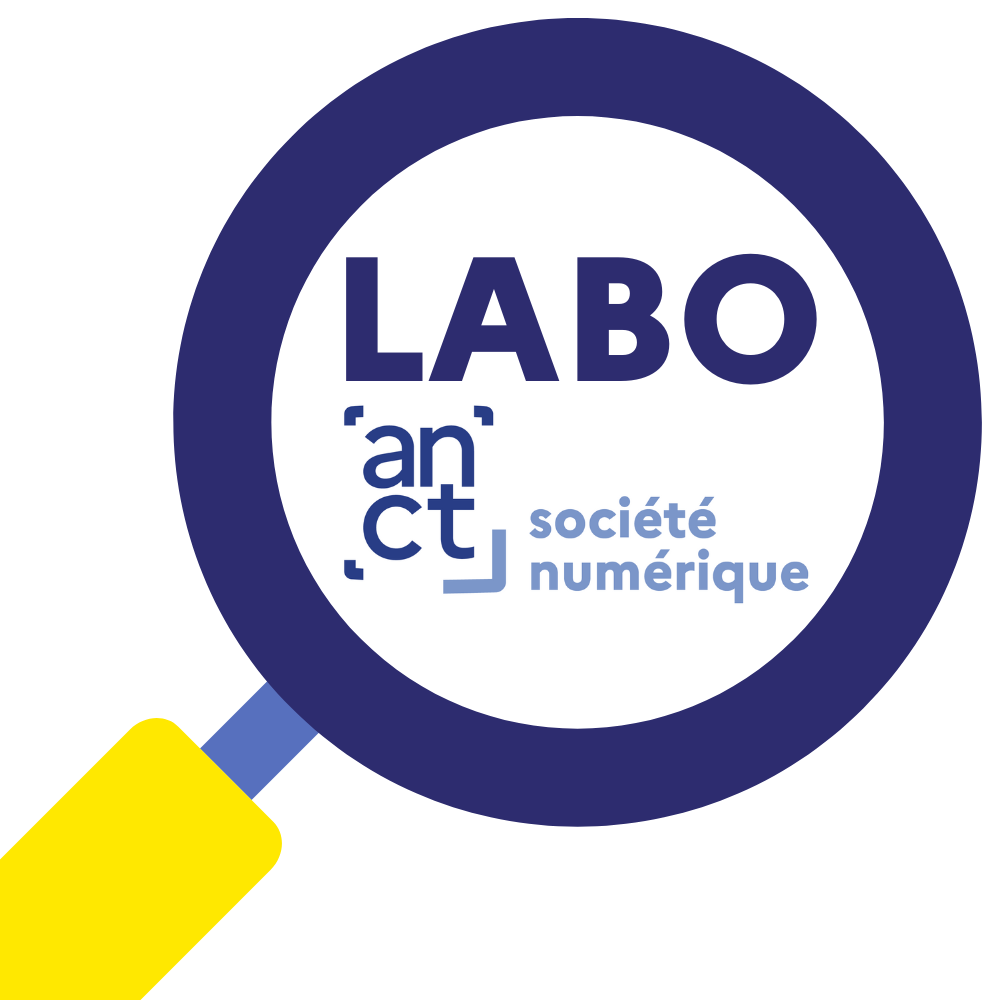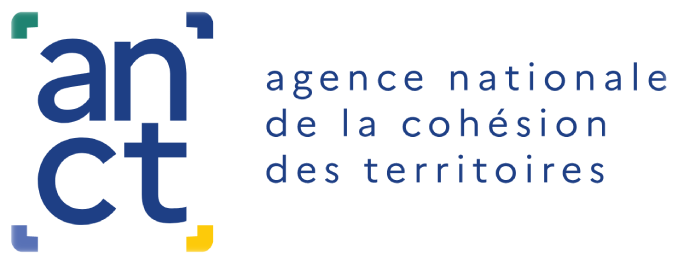Why a research program?
National data on French people's digital habits highlight the existence of major inequalities between citizens in their relationship with the digital world. Numerous studies, and in particular the work recently carried out for ANCT by the Centre de recherche sur l'éducation, les apprentissages et la didactique (CREAD), the Centre de Recherche pour l'Étude et l'Observation des Conditions de Vie (CREDOC) and the GIS M@rsouin, highlight the dynamics and contexts that characterize situations of digital distance. Digital remoteness is a multidimensional phenomenon: it can be analyzed from different angles (access to equipment, skills and the ability to take advantage of digital technology) and in the light of socio-demographic variables that may be associated with it. Today, according to this study, digital isolation is a social phenomenon affecting almost 16 million French people. This represents 31.5% of the population, who are part of what can be considered a "halo" of digital outsiders.
In order to combat digital alienation, various schemes exist, including "digital mediation" actions. Starting in 2018, digital mediation has benefited from significant attention and investment on a national scale, with the Stratégie nationale pour un numérique inclusif (SNNI) and then France Numérique Ensemble (FNE) starting in 2023. The Digital Society Program of the Agence Nationale à la Cohésion des Territoires (ANCT ), in charge of steering the SNNI and then the FNE roadmap, implemented the Conseiller Numérique scheme, which aimed to recruit and train 4,000 digital mediators (in this case, digital advisors), spread across the country, to offer introductory workshops and digital training to French people who are far removed from the digital world. While an initial national research program has been launched to understand the effect of the scheme on the development of local digital inclusion strategies, to date we have little data or national study on the effects of mediation on reducing digital inequalities, and on increasing the skills of its audiences. This is why the present research program aims to explore the effect of digital mediation on the public who benefit from it, by relying on the Conseiller numérique scheme, which brings together a group of professionals within a network structured and led by ANCT. However, it is important to emphasize the diversity and richness of the field of digital mediation, which cannot be reduced to the professionals and audiences presented in this study.
Research objective
This study is a continuation of our work on digital distance. It provides elements for characterizing the impact of the mediation offered by digital advisors on the public. One of the first objectives of this research is to detail the profiles of digital mediation users. Who are they in relation to the national population? What are their characteristics in terms of distance from the digital world? The second objective is to understand the effect of mediation on the skills of these audiences, and more broadly on their relationship with the digital world. What do they learn? Do mediation sessions change people's relationship with digital technology?
To answer these questions, we mobilized the variables traditionally used to measure digital distance: socio-demographic variables, equipment variables and skills analysis. However, in line with the elements put forward by the study on digital distance (mentioned above), it now seems crucial to supplement these variables with subjective indicators of the public's relationship with digital technology, in order to better understand the mechanisms of distance. Indeed, the fact of having access to devices and digital skills is not enough to understand the differences in usage within the population. The subjective dimension of digital perception is a determining factor in the development (or not) of uses that enable concrete improvements in people's lives. The use of digital technology to develop one's "power to act" (cf. the concept of "digital capability") can only be achieved if the individual perceives and believes in his or her ability to use digital technology as a vector of opportunity. Does digital mediation help increase this sense of competence?
The aim of this research is therefore to propose a renewed approach to the impact of digital mediation on audiences, by adopting a set of subjective variables that allow us to place the digital in its contexts of use (because the digital is never without an object) and to grasp what mediation changes in the relationship of audiences to the digital.
The method
Building a questionnaire
This study is based on a quantitative questionnaire survey of digital advisors' audiences.
Prior to building the questionnaire, we spent six days immersing ourselves in the work of digital advisors operating in different contexts - in terms of territory typology, structures, support methods (individual and collective) - in order to meet the public, and to discuss the challenges and logistics of the study with advisors and structure managers. These meetings, together with a preliminary literature review, enabled us to construct our questionnaire on the basis of various reference frameworks(questionnaire available on Les Bases du numérique d'intérêt général). The questionnaire as designed is based on the following reference frameworks:
- A repository of "skills", from the Capacity survey (2017);
- A reference framework for "contextual" digital use, based on the web of capabilities developed by the Agence nouvelle des solidarités actives (ANSA) and Mednum;
- A reference framework that focuses on the source of change in the relationship with digital technology, based on the work of psychologist Albert Bandura.
Mailing list
One of the methodological challenges of this study was to reach digital mediation audiences, in this case digital advisors, for whom there is no national database of contact details. To get the questionnaires to the people targeted by this study, we collaborated with digital advisors, who represent a proportion of the professionals whose activity is centered on digital mediation, and whose network structure enabled us to deploy the questionnaire on a large scale. They were the ones who communicated the questionnaire to the people they accompanied. We sent them a test version of the questionnaire ahead of time, so that we could best adapt the content to their audience, as well as providing them with communication materials to present the approach more widely. Their participation was entirely voluntary.
In order to facilitate the transmission of the questionnaire to the public and to take into account the heterogeneity of their digital skills, several modes of administration were made available:
- A digital medium, accessible via a QR code or hypertext link;
- A printable PDF format so that those who wish can fill it out on paper;
- A call platform that can be mobilized to call back people who wish to take the test orally.
We also translated the questionnaire into English, in order to broaden its potential audience, particularly among allophones.
The sample of respondents
A total of 1,327 people responded to the questionnaire distributed via digital advisors. The questionnaire was distributed between March 27 and May 7, 2023, a total of six weeks. The questionnaire was sent to all digital advisors in France, so that they could relay it to their audiences on a voluntary basis. In order to collect as many responses as possible, all the questions on the online questionnaire were made compulsory, with the exception of the one concerning address (which provided data on respondents living in rural revitalization zones or in priority urban policy districts). For paper respondents, it was not possible to check the effectiveness of responses to all items.
In order to build up a consolidated database, we merged respondents' answers from the various channels (online, paper, telephone), and carried out an initial sorting process to eliminate questionnaires that had not been completed or had not been filled in sufficiently. We had a total of 1,348 responses across all media, from which we selected 1,327 with sufficient responses (completion rate over 90%). We used different types of questions: responses by scale and responses by category.
Of the respondents, 79% (1,051) completed the questionnaire online, and 21% (276) on paper. The telephone option was not used, as the number of profiles giving their telephone number was very low (less than 10). Respondent profiles are differentiated according to the channel through which they answered, with paper questionnaires likely to have reached the audiences furthest away from digital technology.
Methodological precautions
Given the method used to administer the survey, which relies on the voluntary work of digital advisors who pass on the questionnaire to their audiences, we can't rule out a bias in the recruitment of respondents. Digital advisors may have consciously or unconsciously selected audiences with whom they were more familiar, such as those who attended a large number of support sessions, resulting in the over-representation of these profiles in the sample.
The representativeness of the sample cannot be measured in relation to a reference population other than the national population. There is currently no specific statistical survey of digital mediation audiences. We are therefore unable to establish whether our sample of respondents is representative of the audience for digital advisors, or more broadly of the audience for digital mediation.
In this study, we do not compare the effects of digital mediation with the profiles of digital advisors. Indeed, the questionnaires collected were not designed to establish the link between a respondent and the digital advisor who accompanied him or her. Although this aspect was not addressed in our survey, it would be valuable to carry out work aimed more precisely at characterizing the types of effects of mediation as a function of mediator profiles.
One of the challenges of the study was to propose a short questionnaire, easily understandable and accessible to the audience of digital advisors. So the question of the feeling of competence, which is by nature complex and multidimensional, has been reduced here to a few variables which we felt were essential, but which would merit further investigation, notably via qualitative survey methods.
Finally, the questionnaire was designed to explore how users feel about digital technology. All the data collected is based solely on declarative statements, emphasizing the impact of support on the feeling of competence, and not on a factual increase in competence, which would have been objectified and observed, for example using tests such as Pix.
The full study report
PDF document
The main results
Digital mediation audiences
In this case, the beneficiaries of our digital advisors tend to be older, less educated, more often women, living in suburban or rural areas. They have all the socio-demographic characteristics of today's less digitally-savvy public. They resemble the people who have lost touch with the digital world, as described in various national surveys, notably the Digital Barometer.
While they are no less equipped than the average French person (thus confirming the end of the "digital divide", as a lack of access to equipment, as the predominant interpretation of digital inequalities), the beneficiaries of the digital advisors describe themselves as being very uncomfortable with digital technology. They claim to have mastered basic digital skills, albeit with some difficulty. They appear to be relative novices when it comes to handling tools. For them, digital technology is first and foremost a tool for socializing, for exchanging information with family and friends. But it is also a source of constraint: for almost half of our customers, administrative procedures are one of the main areas of digital use.
However, behind the averages lie a multitude of cases, and a diversity of profiles (representative of a "halo" of digital outsiders, to use the concept developed by CREDOC, CREAD and GIS M@rsouin in the research program for ANCT). Initial key variables emerge to describe, or even explain, different relationships to the digital world among the audiences of digital advisors: in particular, the variable of generation (and the resulting socialization to digital tools), and the variable of diploma (as an indication of greater or lesser cultural capital, which favors a more strategic and beneficial use of the digital world). These differentiating variables will also influence what people expect from digital mediation courses, and what they get out of them.
Digital mediation courses
The majority of people (three-quarters of the public) come to see a digital advisor when they want to learn how to better master digital tools in general. in general (broad learning and training objective), rather than to resolve a specific difficulty or question relating to digital use (emergency help for a very specific need). For most people, digital advisors are mobilized as digital generalists, with the aim of providing long-term training. In fact, they are most often called upon by retired people who have time during the week for intensive, iterative, long-term support. For the majority of our customers, they will meet the digital advisor more than a dozen times. Learning takes time.
Other public profiles nevertheless stand out, even if they are more marginal. These are younger people, who are more likely to be job-seekers, and who see the digital advisor as part of an ongoing process, referred by another structure. Other groups, also younger and in work, come to us with a specific training need. They often come as part of a one-to-one support program, and declare themselves to be more at ease with digital technology: they are more familiar with its potential, and know precisely what they are looking for when they approach the digital advisor.
Most of the time, the support provided by digital advisors focuses on the first steps: learning how to turn a computer on and off, learning how to surf the Internet, etc. Almost half of the courses deal directly with administrative procedures, confirming that for a large proportion of digital advisors' clients, administrative procedures are a problem when carried out online without intermediaries (disintermediation).
The changing relationship with digital technology
The survey shows a very high satisfaction rate among people who have benefited from the support of a digital advisor. Almost all of them feel that the digital advisor has met their expectations, and that they have made progress in their use of digital technology thanks to the advisor (93% now succeed in tasks with digital technology that they were unable to do before the support, and 97% feel they have made progress).

Beyond these broad aggregates, the survey aimed to specify the nature of the progress perceived by the public, and more broadly the evolution of their relationship with the digital world, thanks to the support of digital advisors. To what extent does the support provided by the digital advisor strengthen their "power to act", with concrete applications in their daily or future lives? The survey shows that digital advisors boost people's confidence in the tools they use, in particular by influencing their emotional and psychological state with regard to digital technology: after receiving support, digital technology is perceived less as a danger and a risk, and more as an opportunity (60% of respondents say they feel more comfortable and less stressed about handling digital tools). The areas of use in which people feel they have made progress are diverse. Thanks to our digital advisors, people know how to make better use of digital technology in exchanges with their loved ones, leisure activities, information, training, daily life, etc.
In terms of the sources of the rise in the feeling of competence (why do we feel more at ease after the support?), several explanatory elements appear: the fact of having learned in a group seems important (the collective and social dimension of the support), but also the fact of having been accompanied by someone, a "human" intermediary to train on "the machine". The fact of having been encouraged by the digital advisor, and of seeing their progress recognized by him or her, is important, as is the ability to have trained with him or her, within a pre-established framework.
Typology of beneficiaries and digital mediation schemes
The survey proposes a typology of digital mediation beneficiaries, based on a multiple factor analysis and a hierarchical ascending classification, which goes beyond averages to highlight the differentiated profiles of digital advisors' audiences. This typology combines data on the profile of individuals, in terms of their socio-demographic characteristics and their relationship with digital technology, with data on the perceived impact of the support provided.
Four profiles stand out. Senior beginners " account for 25.7% of digital advisors' clients. These are the people least at ease with digital tools, and the ones who receive the most long-term support. They feel they are making progress, especially in the areas of exchange, relaxation and culture. The " initiated seniors " (35.1% of the public) are slightly more highly qualified than the "senior beginners" and do not feel at ease with digital technology, but still more so than the "senior beginners". Here too, support from digital advisors is intensive. Progress is perceived by people in the areas of administrative procedures, budget management and access to healthcare, uses that could be described as more strategic and more challenging than the areas of progress of so-called "beginner seniors". The "initiated seniors" go further along the learning curve, no doubt because they didn't start from such a long way back. Those on " advanced courses " (26% of the audience) are people who come more often for a very specific training need, on the use of a software program for example. These are people who are more familiar with the digital world, and have a better understanding of its potential. They are less likely to feel that they are upgrading their skills with the digital advisor, as they are higher up the learning curve. However, they will over-report progress in the field of training (mobilization of digital tools to "train oneself"): we can assume that digital technology is more synonymous with empowerment for these groups. Finally, the " integration pathways " represent a very specific public profile, albeit a minority in the panel (13% of the public). They are younger, more urban, more often job-seeking and more male. They receive support from the digital advisor as part of a referral from another organization, and often receive individual, one-off support. Their progress is concentrated in the areas of administrative procedures and work. These are more economically precarious people, whose learning is likely to be geared towards a direct improvement in their material situation: access to social benefits, access to employment.
Through this typology, which reveals a diversity of beneficiaries' needs and advisors' intervention methods, four major mediation systems emerge:
- Digital acculturation, through appropriation of equipment operation and familiarization with digital culture. This scheme seems to be particularly popular with digital advisors for "senior beginners".
- In addition to mastering digital technology as a tool, support in the strategic use of digital technology requires the ability to identify the resources to which it gives access and the uses to which it can be put (healthcare, managing daily life, etc.). Senior initiates" are more likely to fall under this mediation regime.
- The development of specific skills for people who are already at ease with digital technology, but who wish to learn more about the technical aspects of digital applications, for personal or professional reasons. This is the ideal type of "refresher course" that best fits in with this type of mediation.
- Supporting people in integration situations in their interactions with their institutional environment via digital means. The profile of "insertion paths" described above corresponds perfectly to this form of digital mediation.
Beyond the diversity of the profiles supported by digital advisors, the typology shows the different forms that mediation can take, and the uses it can serve. The differentiation of the effects of digital mediation, through these four main profiles, highlights the types of positioning that digital advisors can have according to the audience, and can inform reflection in terms of public policy. The type of mediation and the type of profiles supported by a given digital advisor depend on the strategic objectives set by the local digital mediation sponsors and funders (as part of a local digital inclusion strategy), and on the way in which the various digital mediators work together: who supports which audiences? And through which information and guidance networks? At this stage, the results of the survey show the relatively generalist positioning of digital advisors, who meet audiences with a variety of profiles, mostly very novice, but sometimes more specialized, with a definite role in reducing social inequalities (in the way it reduces inequalities in digital access).





